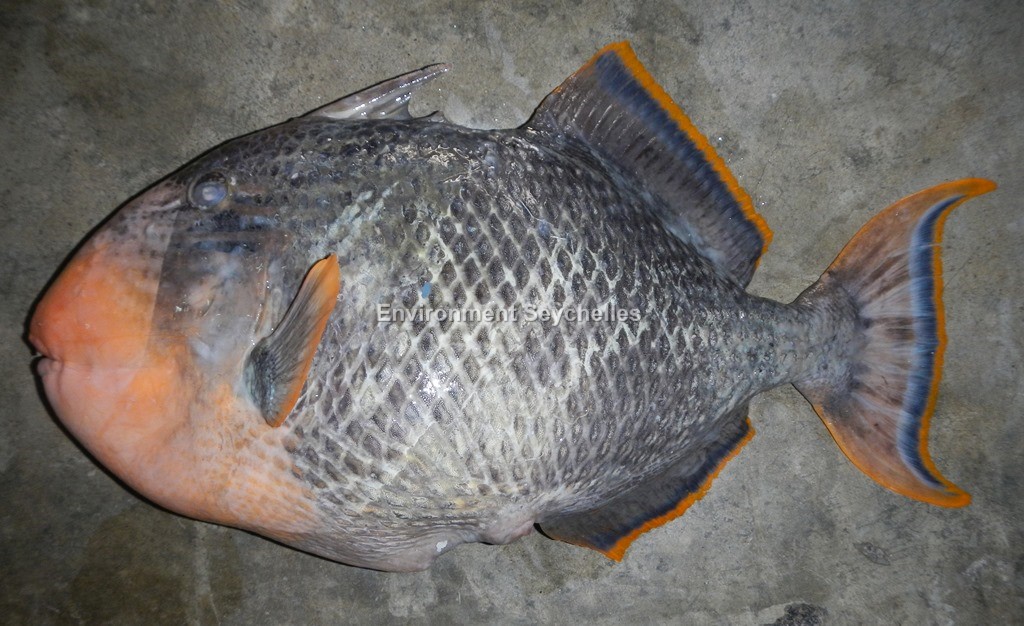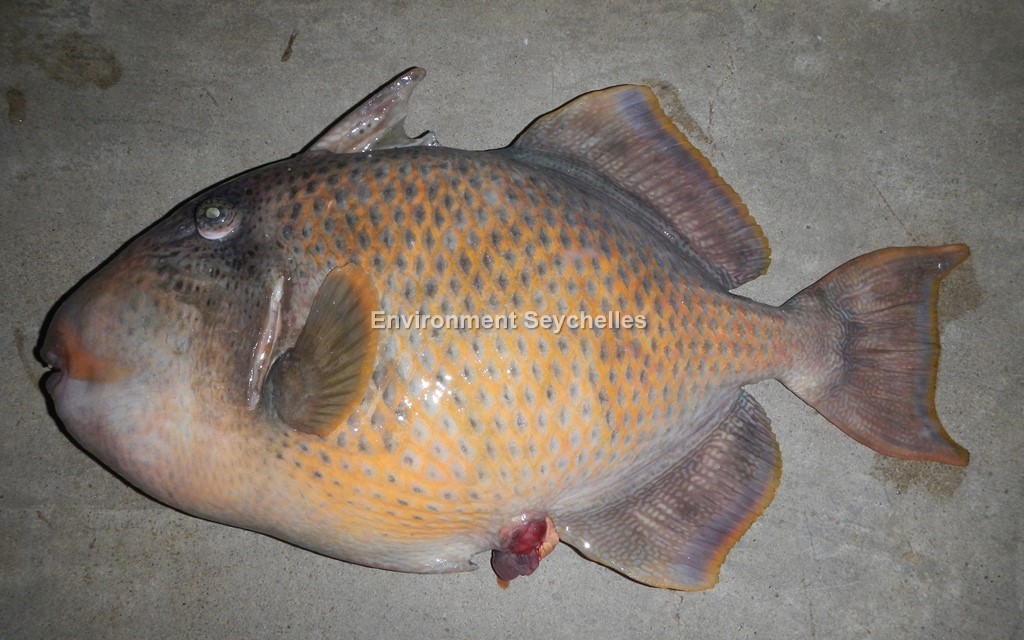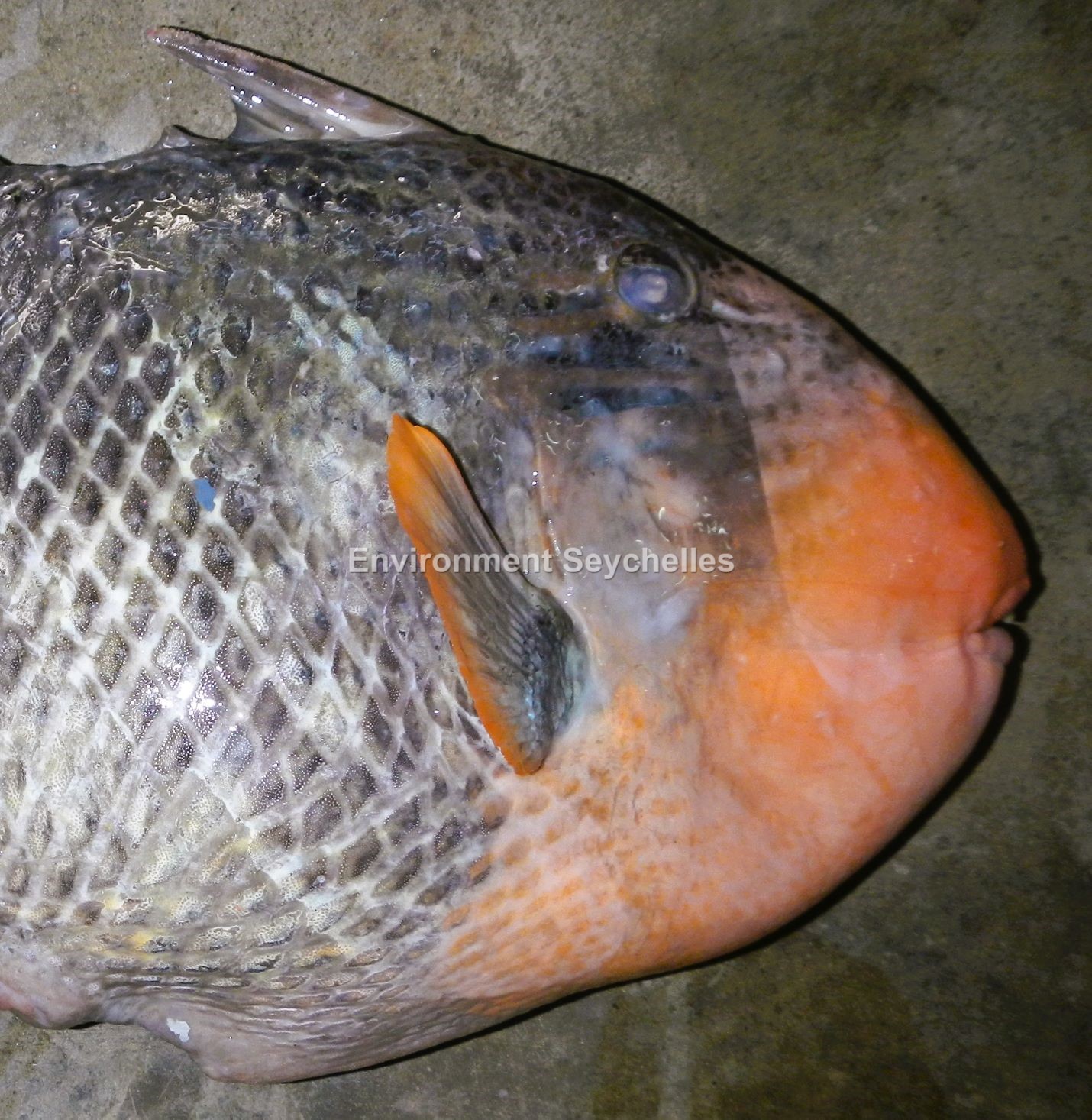Description:
Dorsal spines: 3; Dorsal rays: 24-27; Anal spines: 0; Anal rays: 22-25.
Adults are pinkish to grey with a cross-hatched pattern on the sides of the body, formed by the pale margins of the large scales, and yellow fin margins. Deep groove in
front of the eye and shallow horizontal grooves on upper cheek and orange-yellow face. Caudal fin emarginate or double emarginate with medium length lobes. Juveniles
are yellowish with small black spots, dark saddle-like markings crossing the back and rounded caudal fin.
Size:
Maturity: Lm unknown. Range unknown Max Length: 60cm TL.
Habitat and Ecology:
Occurs in coral reefs and inshore waters (depth 2-50m) often in silty habitats. Generally solitary or in pairs, juveniles may form small aggregations. Feeds on tips of
coral branches, gastropods, crustaceans, foraminifera, tunicates and sea urchins. Males establish territories with nest sites and egg chambers at traditional spawning
grounds. Females select a male for mating. Up to 430,000 or more eggs may be deposited in a spongy fist-sized cluster weighted down with pieces of rubble. Nest-guarding
females are aggressive.
Fishery Status:
This species is not protected or subject to fishery regulations. It is caught in the hand line fishery, but is a rare component of the catch.
Notes:
References:
Froese, R. & D. Pauly. Eds. (2018). FishBase https://www.fishbase.de/summary/pseudobalistes-flavimarginatus (04/11/18)
McGrouther, M. (2013). Yellowmargin Triggerfish, Pseudobalistes flavimarginatus (Rüppell, 1829). Australian Museum. https://australianmuseum.net.au/yellowmargin-triggerfish-pseudobalistes-flavimarginatus (04/11/18).
Smith, M & Heemstra, P. Eds. (1999). Smiths’ Sea Fishes Edition 6. Springer-Verlag Berlin Heidelberg 10.1007/978-3-642-82858-4
Citation:
Nevill, J.E.G. (2019). Pseudobalistes flavimarginatus, Yellowmargin triggerfish. Seychelles Seatizens. www.seatizens.sc. https://seatizens.sc/species/pseudobalistes-flavimarginatus-ruppell-1829/ (edited 19/06/22).




Great blog post.Really looking forward to read more. Fantastic.
Hey, thanks for the blog post.Thanks Again. Really Great.
Very good post. Fantastic.
Wow, great blog article. Cool.
Thanks-a-mundo for the blog.Much thanks again. Keep writing.
Thanks again for the blog. Keep writing.
wow, awesome blog article. Want more.
I appreciate you sharing this blog post.Much thanks again. Fantastic.
Wow, great article post.Really looking forward to read more. Really Cool.
Thank you for your article.Much thanks again. Much obliged.
Thank you ever so for you blog.Thanks Again. Really Great.
I value the article.Really looking forward to read more. Want more.
Very informative blog article.Much thanks again. Really Great.
Im thankful for the post.Really looking forward to read more. Cool.
Wow, great blog article.Really looking forward to read more. Great.
Really enjoyed this blog post.Thanks Again. Cool.
Thanks so much for the post.Really looking forward to read more. Great.
I really like and appreciate your blog post.Thanks Again. Much obliged.
Wow, great blog.Really thank you! Really Cool.
Very good article.Much thanks again. Really Great.
I cannot thank you enough for the post.Really looking forward to read more. Much obliged.
Wow, great article post.Thanks Again. Great.
I loved your post.Much thanks again.
Wow, great article.Much thanks again. Really Great.
Very good blog.Much thanks again. Cool.
Im obliged for the blog.Really looking forward to read more. Want more.
Appreciate you sharing, great article post.Really thank you! Really Great.
Very good blog post.Much thanks again. Fantastic.